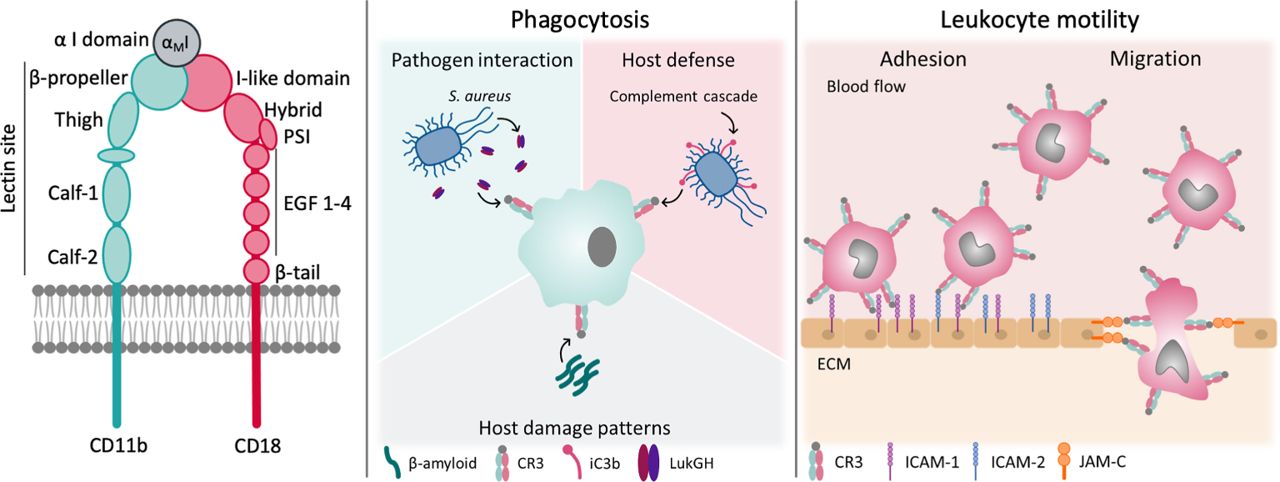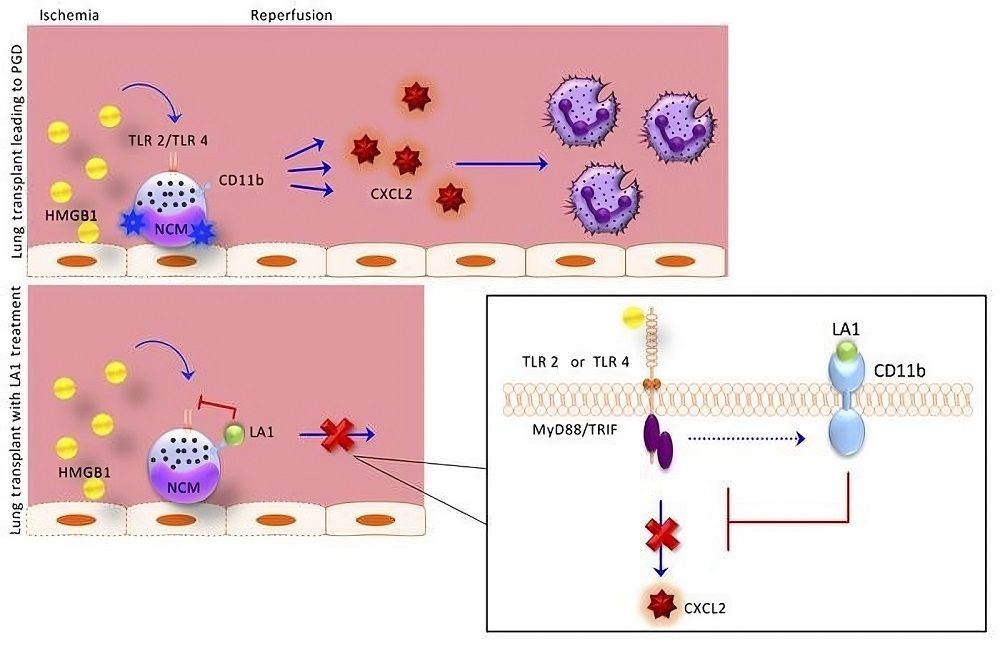As a preeminent contract antibody development company, Creative Biolabs offers high-quality in vitro diagnostic (IVD) antibody development services targeting a wide range of biomarkers. Here, we focus on the CD11b as a marker of sepsis. We are committed to providing the highest quality of custom services and products at the most reasonable prices.
CD11b
The molecular weight of CD11b is 160 kDa. The expression and activity of the genes located in the broken arm p11~p13. CD11b of chromosome 16 is regulated by various chemokines and can interact with various ligands. It is an important leukocyte surface antigen, widely expressed in a variety of immune cell subpopulations, such as dendritic cells, mononuclear macrophages, neutrophils, NK cells, and B cells. It can form leukocyte adhesion with CD18 Molecular β2 integrin CD11b/CD18 (also known as Mac-1 or CR3). It has been confirmed that after activation of CR3, it binds with ICAM-1, ICAM2, fibrinogen, C3bi, GPIbα and other ligands, which regulates the adhesion and migration of leukocytes and promotes neutrophil and endothelium. Promotes adhesion between neutrophils and endothelial cells, assists macrophages, neutrophils, and monocytes to exert phagocytosis and participates in the clearance of immune complexes. Mac-1 is also involved in the negative regulation of multiple immune cell signaling pathways.
 Fig.1 Structure and function of CR3.1
Fig.1 Structure and function of CR3.1
CD11b as Marker of Sepsis
Antagonism of CD11b with the CD11b blocker Ab or the CD11b inhibitor Gu-4 can protect mice from LPS-induced endotoxin shock and CLP-induced microbial sepsis. Compared with wild-type littermates, CD11b-deficient mice are more resistant to microbial sepsis and have a higher survival rate. These results indicate that CD11b contributes to the development of microbial sepsis. In recent years, the nuclear protein HMGB1 has been identified as a novel and advanced pro-inflammatory mediator that can be released by activating the release of innate inflammatory cells in response to stimulation by pathogen-associated molecular patterns and inflammatory cytokines. The extensive intracellular and extracellular activities of HMGB1 make it a key pathogenic factor in microbial sepsis. The antagonism of CD11b affords protection against endotoxin shock and microbial sepsis, predominantly via attenuating HMGB1 release. CD11b promotes cytoplasmic translocation of nuclear HMGB1 into activated macrophages, and therefore, antagonism of CD11b-attenuated HMGB1 release is at least partially achieved by disrupting the nuclear translocation of HMGB1.
 Fig.2 CD11b acts as a molecular brake.2
Fig.2 CD11b acts as a molecular brake.2
IVD Antibody Development Services for CD11b Marker
Increased expression of CD11b on PMNs correlates with the development of sepsis, suggesting that CD11b may serve as a biomarker for the diagnosis of sepsis. With advanced technology, IVD technologies are undergoing rapid development in recent years. IVD antibodies have been used as important tools to offer independent diagnostic and prognostic value by presenting an underlying disease state. With years of experience, Creative Biolabs provides a variety of IVD antibody development services against CD11b for the detection of sepsis.
Besides antibody generation, Creative Biolabs also offers diagnostic immunoassay development services, including feasibility analysis, assay design, assay protocol establishment, assay optimization, and kit production. If you are interested in our IVD antibody discovery services, please contact us for more details.
References
- Lamers, Christina, Carla Johanna Plüss, and Daniel Ricklin. "The promiscuous profile of complement receptor 3 in ligand binding, immune modulation, and pathophysiology." Frontiers in immunology 12 (2021): 662164. under Open Access license CC BY 4.0, without modification.
- Querrey, Melissa, et al. "CD11b suppresses TLR activation of nonclassical monocytes to reduce primary graft dysfunction after lung transplantation." The Journal of Clinical Investigation 132.14 (2022). under Open Access license CC BY 4.0, without modification.
For Research Use Only.

